SUMMARY
This is AI generated summarization, which may have errors. For context, always refer to the full article.

Conclusion
Part 1: Indigenous women protect migratory marine species in Calamianes Islands
PALAWAN, Philippines – One of the toughest challenges the island province of Palawan has had to contend with is how to prevent illegal, unreported, and unregulated (IUU) fishing.
Monitoring IUU fishing is particularly difficult for the Calamianes Island Group (CIG). Linapacan alone – one of the four municipalities in the CIG – consists of 52 islands.
The marine protected area (MPA) that lies between Barangay Calibangbangan and Takling Island in Linapacan is guarded daily by members of Tagbanua women’s movement Kilos Kababaihan.
“Once we catch a violator, we have the violation entered into the police blotter. They are ordinary folk who are either from the municipalities of El Nido or Taytay in central Palawan,” said Noel Lucio, the mandatory representative of the Tagbanua tribe in Calibangbangan.
In Culion, community watchers “report good and bad behavior of fishing practices in their places,” said Noli Llavan, Culion Foundation Inc.’s project manager for the municipalities of Coron and Culion. These community watchers include the Barangay Fisheries and Aquatic Resources Management Council, the Bureau of Fisheries and Aquatic Resources (BFAR), the maritime group of the Philippine National Police, and the MPA watchers in their respective areas.
The Palawan Council for Sustainable Development’s (PCSD) District Management Division in Calamian, meanwhile, apprehends and files charges “as necessary” when they come across illegal activities, according to district manager Ma. Christina Dalusung-Rodriguez.
The long and narrow island of Palawan accounts for 5% to 10% of the country’s total forest cover, and has the largest old-growth mangrove forests in the country. It is also rich in coastal and marine resources, said Rodriguez.
The Philippines actually has a lot of environmental laws in place. Patrolling for the PCSD means making sure that wildlife-related activities in the province do not violate the Wildlife Resources Conservation and Protection Act and the council’s Administrative Order Nos. 12 and 5, which cover illegal fishing without the necessary permits, illegal collection of wildlife species, wildlife trafficking, and poaching.
“We have our enforcement unit or section, and we detail Wildlife Trafficking Monitoring units (WTMUs) or officers to major ports and airports in Coron, [as well as] in Cuyo, Agutaya, and Linapacan. There are a lot of WTMUs in some parts of the province. They check permits related to wildlife going outside Palawan,” Rodriguez said.
She said, however, that mobilization is more complex and requires more resources.
Preventing IUU in Calamianes
IUU fishing is one of the biggest challenges for women in Calamianes, whether they are guardians of marine protected areas or are fishers themselves.
For one, when boats use very bright lights, fishers know there are “aliens” in their oceans, noted Teresita Bato, a woman fisher and member of the Salvacion Fisherfolks Association of Barangay Salvacion in Busuanga.
Commercial fishing vessels can be detected through satellite images due to their use of very bright lights.
Those guilty of IUU fishing usually come from other places in Palawan and, sometimes, from distant parts of the archipelago or even overseas.
According to Raffy Agustin, assistant field program officer of Path Foundation Philippines Inc. (PFPI), migrant fishers use illegal means to catch fish, including cyanide, dynamite, and spear guns.
Worse, said Mazo, they employ purse-seine, a fishing method that unwittingly catches other marine species, including migratory and possibly endangered or critically endangered species, such as marine turtles, dolphins, whale sharks, whales, and fish that haven’t reached full maturity.
“The use of cyanide in the capture has been a chronic problem over the years, and still occurs, which is why the use of compressors in small boats has been banned by some municipalities and provinces in the Philippines to stem the use of poison in fishing,” said Alan White, marine resource management consultant for international development firm Tetra Tech ARD.
Compressors, commonly used in paaling or lintigan fishing operations, are considered as types of active gear banned in municipal waters under Section 95 of Republic Act (RA) No. 8550 or the Philippine Fisheries Code of 1998, as amended by RA 10654. They are also prohibited under Palawan Provincial Ordinance No. 819, series of 2005.
Since July 2022, the local government of Linapacan has aggressively pursued IUU fishing violators, slapping fines on erring boats and their crew, and confiscating boats and their equipment that are harmful to oceans, corals, and marine species.
Linapacan Mayor Emil Neri said that their municipality had been able to reduce the incidence of IUU fishing activities by 70% from July to October 2022. While a BFAR source did not categorically confirm the 70% drop in IUU incidence, the source confirmed that Linapacan had been downgraded from “high risk to low and moderate risk” for IUU fishing.
The Fisheries Resource Protection Group in Northern Palawan also observed that less commercial fishing vessels enter the municipal waters of Linapacan; the number of fishers using compressors in the area have declined; and the amount of illegally caught fish previously sourced from the area around Linapacan and which go through the port of Coron, has decreased.
Neri said that Linapacan distributed a total of 500 gallons of fuel to around 500 fishers who have registered with the local government and its partners. These were sourced from the collection of P3.6 million worth of fines from 43 boats of illegal fishing violators from July to October 2022.
Taking their cue from Linapacan, the other town mayors in Calamianes are joining forces with the municipality to prevent IUU fishing in the island group.

Changes
But even with strict monitoring and implementation, there still had been instances when indigenous people covertly sold turtles, said PFPI field program officer Vel Llavan, who is based in Linapacan.
Vel’s brother Noli, however, noted: “There had been cases when indigenous people were tapped for poaching. But this is very rare, and not in the entire Palawan.”
So how did the indigenous people go from selling turtles themselves to protecting them?
“It was a process over the years of law enforcement and education,” said White.
He thinks that what probably made it work was the education that reached most young people through their schools, and media attention, too.
“All sea turtle species are protected by law in almost all countries. The threats, though, are more localized, and mostly due to people collecting the turtle eggs from their nests buried in sandy beaches. The market for turtle eggs is still strong in Malaysia and Indonesia, but less so in the Philippines. It is also illegal to sell turtle eggs in the Philippines,” said White.
He also explained that the shift of local fishers not harming sea turtles happened because of other factors. These iconic species have received lots of attention and quite good law enforcement. The demand for their export to China, Japan, and other parts of Asia has been monitored closely. They have also been spared by the belief of some communities that sea turtles bring good luck.
Take for instance the case of Siete Pecados Marine Park in Coron, which has seen a lot of improvement since its declaration as a marine park, according to park manager Jose Mazo.

“Harvesting of turtles has stopped. Now, people let go of turtles stranded on the beach. When people bring them to Siete Pecados, we give them P200 (around $3.62) to compensate them for their effort. Once we release the turtles to the sea, [however], we are no longer able to track where they go afterwards,” Mazo added.
Citing a USAID report, Mazo said that the Siete Pecados MPA “showed improvement [in reef fish biomass], averaging 84.5 metric tons per unit area [in Calumbuyan Island West].”
Reef fish biomass refers to the estimated weight of fish in the survey area of the MPA. This is directly observed and visually estimated by trained divers, said Fish Right senior fisheries management advisor Andre Uychiaoco.
Mazo also noted the change of the hard coral cover of the marine park from 53.4% in 2006 to 63.4% in 2016 – “a positive indicator [of] coral reef health,” according to White, as the hard coral cover is the percentage of the reef that’s covered with living hard and healthy corals.
“It means that the coral reef is recovering from some past damage and is healthier than before,” White added.
In addition to these, he observed that the community in the Siete Pecados MPA “seemed to be very vigilant.”
“The law was important, but more important was the guarding and constant vigilance of the community that was proud of the MPA and its healthy coral and abundant fish. It is a very attractive area for diving and contributes to fish recruitment outside of the MPA boundary,” White noted.
Gains
Meanwhile, in the neighboring municipality Busuanga, non-governmental organization Community-Centred Conservation (C3) Philippines was able to establish 10 community-managed dugong (sea cow) conservation areas and MPAs in Calauit and other communities in Busuanga, said C3 Philippines program coordinator Reynante Ramilo.
Although their focus is the conservation of dugongs, the MPAs also benefit other marine species such as marine turtles, manta rays, and other megafauna species like whale sharks and dolphins.
A 2016 study, which Ramilo co-wrote, identified nesting sites of sea turtles in critical areas in San Isidro, Panlaitan, and Calauit, all in Busuanga, and Pamalican in Agutaya. C3 presented this study to barangay councils in San Isidro and Panlaitan, and in Buenavista in Coron. The community folk themselves recommended the protection of those areas.
“We are working with PCSD and the [Department of Environment and Natural Resources]…to declare them as critical habitat for dugongs and sea turtles,” Ramilo said.
But what help do they need?
“At the national level, there is a need to have aggressive protection in the declaration of critical habitats, both for marine turtles and other marine species. After all, Palawan is ‘the last frontier,’ the center of marine biodiversity,” said Ramilo.
“There are a few MPAs at the national level, like in Calamianes,” he said, lamenting the national government’s lack of support for protected areas.
In addition, Mazo noted that there is no database – and thus no benchmark – on the population of these migratory species.
“You need sufficient funding if you want a database on marine mammals and sea turtles,” he explained.
Mazo also thinks that the people of Calamianes have to learn about the impact of these migratory species on the community.
“Nobody discusses what the contributions of these migratory species to the community are, like the turtle, dolphin, whale.”
Proposed solutions
This year, the PCSD is poised to identify the critical habitats of flagship species in Calamianes, in accordance with Provincial Order No. 2051-A series of 2018. The council already has a project inventory of marine turtle nesting sites in El Nido and San Vicente, municipalities outside Calamianes.
Busuanga and Linapacan in CIG have yet to formally declare their flagship species.
“Collaborative effort between national government agencies, especially on marine conservation, is really important,” said Noli Llavan.
If only indigenous peoples like the Tagbanua were given livelihood, he said, they would no longer poach sea turtles and other marine species.
“We’ll go after the buyers,” Neri said. “If there are no buyers, no one will sell.”
The Linapacan mayor said there’s a need to do “constant and regular patrol in coastal areas.” Since July 2022, Linapacan has been deploying four boats every day to patrol its territory.
Vel Llavan said that their group organized a fisherfolk registration caravan so that artisanal or local fishers in Linapacan could register. She said they did this to track the number of fishers in the municipality, give livelihood support, and show the local government what the fishers do to protect the environment.
She also sees the need for a Certificate of Ancestral Domain Title (CADT) for the Tagbanuas, and for them to register with the National Commission on Indigenous Peoples since the commission still has no presence in Linapacan except in Calibangbangan.
Llavan said that with a CADT, the rights for possession and ownership of land, water, and other resources of the residents of Linapacan would be recognized, and that no one may claim these. The Tagbanua tribe of Coron has already been given a CADT for more than 22 hectares of both land and sea, and the right to manage their land and resources.
PFPI, which works closely with BFAR and the environment department, has helped Linapacan establish MPAs in Barangays Calibangbangan, San Nicolas, Cabunlawan, Barangonan, and New Colaylayan; and the women-managed area in Iloc. It has also submitted a management plan, which includes a list of prohibited activities in MPAs, to the Sangguniang Bayan (municipal council) in Linapacan.
This was supported by a resolution from five barangays, said Agustin. It proposed an ordinance on right sizing of fish (catching fish that are mature or at a size that is most marketable), and supports giving women leadership training.
Agustin said that it would be best if Linapacan had an expert on marine species as well as supply equipment for the rescue of endangered species.
“We lack doctors even for humans. However, if an NGO or any group will send a team of marine experts, we are very much willing to work with them. The municipality can give them an office, and allow them to join those patrolling the oceans within Linapacan’s jurisdiction,” said Neri.

Protecting migratory marine species, fauna of the high seas
Linapacan is the least known of the four municipalities in the CIG. However, it is blessed with some of the clearest waters in the world, a water current that’s 10 times stronger than in other places, an abundance of planktons, and corals that grow fast.
“The [residents] need to sacrifice. If they persevere with their MPA, within five years, the corals will flourish. They have to invest. All of them will gain so much from it,” Neri said.
White agreed, saying healthy reefs not only provide habitat for many fish and invertebrates but also attract drivers and snorkeling visitors, generating income for communities in Coron and many parts of the Philippines.
“Nearshore conservation is critical, because the nearshore habitats of coral reefs, mangroves, estuaries, and their abundance of fish and other species provide important food and nutrients to large marine animals that live in the offshore waters,” he said.
Uychiaoco pointed out that the Philippines has mainly focused on protecting nearshore shallow habitats, but attention must be drawn towards protecting non-shallow farther waters within Philippine territory.
But the problem, he said, has been “the ability to enforce.”
“We really need to protect more of these non-shallow, farther areas because the pelagic fisheries species…we depend a lot [on] are there, and need to be protected there,” he said.
The hope is that all these efforts would result in the protection of migratory species that visit Philippine shores.
“Migratory species are part of the fauna of the high seas, so protecting them helps keep the marine ecosystem intact in the high seas,” said White. – Rappler.com
$1 = P55.24
Reporting for this story was supported by Internews’ Earth Journalism Network (EJN).
Add a comment
How does this make you feel?
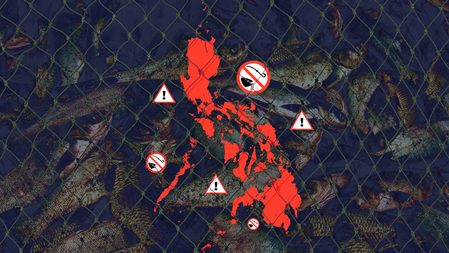










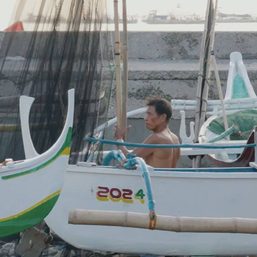
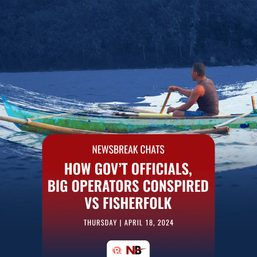
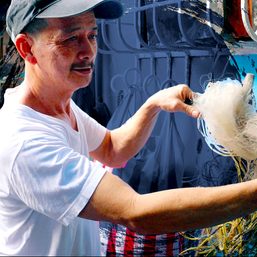
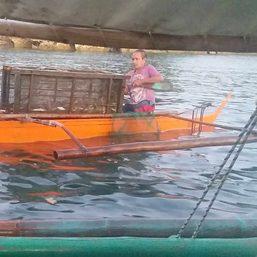
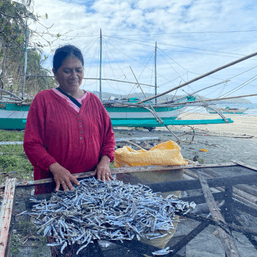
![[DOCUMENTARY] Our 15 kilometers: Small fishers fear losing municipal waters to big operators](https://www.rappler.com/tachyon/2023/12/our-15-kilometers-iuu-fishing-docu.jpg?resize=257%2C257&crop=279px%2C0px%2C720px%2C720px)
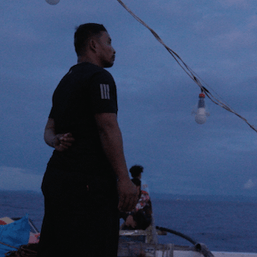
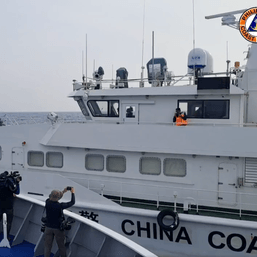
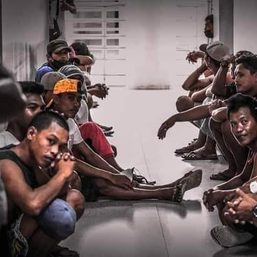
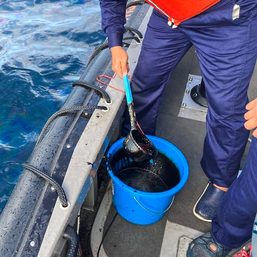








There are no comments yet. Add your comment to start the conversation.